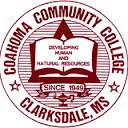What do they do?
Build stone structures, such as piers, walls, and abutments. Lay walks, curbstones, or special types of masonry for vats, tanks, and floors.
Also known as:
Mason, Stone Derrickman, Stone Mason, Stone Setter
-
-6.3%
Change
Ranks #36 in job growth rate50Job Openings
Ranks #6 in net job growth
Looking for colleges that offer a specific major? Use the College Match Tool to find your best-matched schools and discover your estimated Net Price!
- High school diploma equivalent (44%)
- Less than high school diploma (35%)
- Some college, no degree (13%)
- Bachelor's degree (4%)
- Associate's degree (4%)
- Master's degree (<1%)
- Doctorate or Professional Degree (<1%)
People in this career often know a lot about:
- Mathematics - Knowledge of arithmetic, algebra, geometry, calculus, statistics, and their applications.
- Building and Construction - Knowledge of materials, methods, and the tools involved in the construction or repair of houses, buildings, or other structures such as highways and roads.
- Public Safety and Security - Knowledge of relevant equipment, policies, procedures, and strategies to promote effective local, state, or national security operations for the protection of people, data, property, and institutions.
- Design - Knowledge of design techniques, tools, and principles involved in production of precision technical plans, blueprints, drawings, and models.
- Mechanical - Knowledge of machines and tools, including their designs, uses, repair, and maintenance.
People in this career often have talent in:
- Static Strength - The ability to exert maximum muscle force to lift, push, pull, or carry objects.
- Trunk Strength - The ability to use your abdominal and lower back muscles to support part of the body repeatedly or continuously over time without "giving out" or fatiguing.
- Arm-Hand Steadiness - The ability to keep your hand and arm steady while moving your arm or while holding your arm and hand in one position.
- Problem Sensitivity - The ability to tell when something is wrong or is likely to go wrong. It does not involve solving the problem, only recognizing that there is a problem.
- Manual Dexterity - The ability to quickly move your hand, your hand together with your arm, or your two hands to grasp, manipulate, or assemble objects.
- Stamina - The ability to exert yourself physically over long periods of time without getting winded or out of breath.
- Near Vision - The ability to see details at close range (within a few feet of the observer).
- Finger Dexterity - The ability to make precisely coordinated movements of the fingers of one or both hands to grasp, manipulate, or assemble very small objects.
People in this career often do these activities:
- Mark reference points on construction materials.
- Cut tile, stone, or other masonry materials.
- Align masonry materials.
- Mix substances or compounds needed for work activities.
- Spread concrete or other aggregate mixtures.
- Apply mortar.
- Apply decorative masonry finishes.
- Remove excess materials from finished construction projects.
- Install masonry materials.
- Smooth surfaces with abrasive materials or tools.
- Drill holes in construction materials.
- Operate cranes, hoists, or other moving or lifting equipment.
- Dig holes or trenches.
- Position construction forms or molds.
- Load materials into construction equipment.
This page includes data from:

 Occupation statistics: USDOL U.S. Bureau of Labor Statistics Occupational Employment Statistics
Occupation statistics: USDOL U.S. Bureau of Labor Statistics Occupational Employment Statistics
 Videos: CareerOneStop, USDOL/ETA and the Minnesota Department of Employment & Economic Development
Videos: CareerOneStop, USDOL/ETA and the Minnesota Department of Employment & Economic Development


















